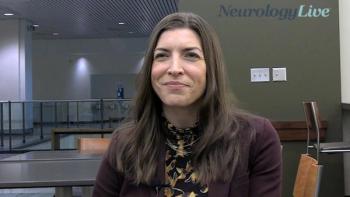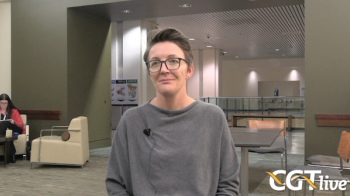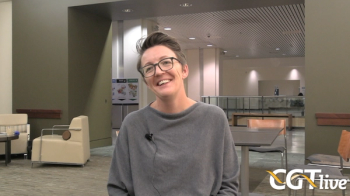
Voyager’s Single-Dose AAV Strategy for Silencing Tau for Alzheimer Disease
Rajeev Sivasankaran, PhD, vice president of neuroscience at Voyager Therapeutics, discussed preclinical data on the company’s AAV-delivered RNA interference therapy, VY-1706.
Voyager Therapeutics is currently exploring methods for treating Alzheimer disease (AD) by targeting the tau protein. Notably, the company presented on one of these approaches, a tau-silencing adeno-associated virus (AAV) vector-based gene therapy referred to as VY-1706, at
At the conference, CGTLive® interviewed Rajeev Sivasankaran, PhD, the vice president of neuroscience at Voyager Therapeutics, who presented new preclinical data on VY-1706 at the meeting. Sivasankaran went over the key results and also spoke on the company's future plans for the program.
CGTLive: Can you give some background context about your presentation at ASGCT this year?
Rajeev Sivasankaran, PhD: We presented on our VY-1706 program. This is a program that is aimed at silencing tau with a vectorized, AAV-mediated delivery of the tau silencing. This program actually is in the preclinical stages, and we presented a lot of our key pharmacology data and some of the early safety data in both mice, as well as in nonhuman primates.
Can you give an overview of the key results?
The the idea that tau is a really important target is validated by the recent advances in the field. For one, tau accumulation seems to really correlate very well with cognitive decline and some of the recent AD therapies where you've seen improvements or suggestions of improvement in cognitive function, or slowing of cognitive decline, seem to correlate really well with slowing down tau accumulation. So we think tau is a really important target. In fact, that's underscored by the fact that at Voyager, we have 2 independent approaches to go after tau. One is an antibody-based approach, which is currently in patients with a multiple ascending dose trial, and VY-1706, which we spoke about, is actually in early preclinical as I mentioned.
We showed really comprehensive data on the profiling of this VY-1706 in a mouse model of AD. It's called the P301S model and it's a model which shows characteristic pathology, tau accumulation, starting at about 8 weeks of age and progressively accumulating in key brain regions over the course of the next 10 weeks or so. We treated these mice with a 1-time intravenous (IV) delivery of VY-1706 which actually resulted in broad delivery of this tau silencing siRNA in key regions of the brain impacted in AD, including the cortex, hippocampus, and brain stem, and showed robust lowering of the tau mRNA and tau protein, as well, as importantly, pathological tau, which was reduced from what we would have expected to be an increased burden over the period of treatment. I think we're very excited about that. I would also point out that the siRNA is really potent in vitro, it's very selective, and when we look at the global transcriptomics, we see very little off-target activity.
We went on then to test the same VY-1706 with a single IV delivery in nonhuman primates. This is an important large animal where we want to understand the distribution of the treatment to key brain regions and also look at tau mRNA and tau protein reduction. There, once again, we saw a very nice dose dependent increase in the delivery of the of the cargo to key brain regions, including the cortex, hippocampus, and several other regions of the brain which are important in AD as well as in primary tauopathies, which are another major indication resulting from tau pathology. We see about greater than 50% tau protein reduction in several of these key brain regions. Additionally, we actually did the study out to about 11 weeks, and the treatment was really well-tolerated. We did not see any clinical signs or clinical chemistry changes, including in cardiac enzymes and liver enzymes. Also, importantly, we looked at a surrogate marker for neuronal toxicity, or dorsal root ganglion toxicity, which is often associated with AAVs, and we found that the neurofilament light chain levels were not elevated at all during the entire course of this study.
So we're very excited about the program, and we are on track for initiating our good laboratory practice (GLP) tox studies later this year, and we look forward to an investigational new drug (IND) application filing in 2026.
How would you summarize the big picture implications that you would want doctors and the broader healthcare community to take away from this?
I think one of the key advantages of this approach would be that it would be a single IV delivery, so it would have ease of administration and a lot less burden on the patients of the healthcare system because it's expected to be a one-time delivery. I think that's a big differentiator compared to routine delivery for the life of the patient.
Are there any future plans you can discuss related to this?
I think we're very excited about the preclinical data that we've generated so far, and we're on track for continuing to our GLP tox studies and we look forward to an IND filing in 2026, as I mentioned before. I think generally, the pharmacology data that we have seen so far is very consistent with what we would expect to be a therapeutic dose range, at which we are seeing these marked reductions in tau in key regions of the brain. We're very excited about that.
Is there anything else you want to add?
We're very excited about the VY-1706 program and the data that we've generated so far. We look forward to advancing it to the clinic, and just to reiterate that with our 2 targeted therapy approaches, we are doubling down on this target, which we view as a really important target for AD.
This transcript has been edited for clarity.
Newsletter
Stay at the forefront of cutting-edge science with CGT—your direct line to expert insights, breakthrough data, and real-time coverage of the latest advancements in cell and gene therapy.










































